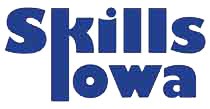If you haven't already gone to reports to see how your students have done, try to find the time to check that out. For math, it's mostly a matter of seeing how your students did on the benchmark tests on concepts that you expected them to know when they came to you or to know by the time they took the assessment. Probably the easiest way to see how your students performed on a single assessment such as the benchmark assessments is to look at the Assessment Results report. While the scores at the top of the report showing each student's performance on the assessment are interesting and can tell you something about how seriously a student took the test, they shouldn't be used as a real sample of how well that student is doing in your class. After all, there is typically only one question on the skill, and they may perform better on a larger sampling. The assessment is more useful to see how your entire class did, and this information is found in the last part of the report where you find the multicolored bars. The red portion of the bar shows low performance and the blue part reflects high performance. Clicking on the bar will give you the names of the students who struggled and succeeded with this skill. More importantly however, is the idea that this is a skill which should be taught to the entire class or one that can be done in targeted instruction that will help remediate a group in your class. In math you may want to look at the performance in a given skill and make a decision to give an assessment of your own with more questions over the same skill. Just take note of the number/letter code in front of the skill and then create a new assessment that covers that exact same skill.
In ELA (reading comprehension) you may want to design a lesson plan around the passage that was used in the assessment. Print the passage out and distribute the passage section to your class. If your students struggled on inference, for instance, you could ask them an inferential question that they can answer in small groups. Have them find evidence in the passage that will support their answer. Have them discuss their ideas in small groups, and then have them write a short paragraph that answers the question. If they struggled on main idea, have them underline the most important sentence in every paragraph and then in 20 words or less, explain the main idea of the passage. Cause and effect cause your kids problems? Design a lesson which asks them to find the reason something happened and then what effect that action had; next, ask them to explain it in an outline, a short paragraph or a mind map.
The assessments you are giving your kids are just the starting points for increasing student achievement. It is only through using the data to drive your instruction that achievement increases.
If you want to get more ideas like these, sign up for the Skills Iowa Regional meetings. You can find the sign up information on the opening page of our website: www.skillsiowa.org

No comments:
Post a Comment